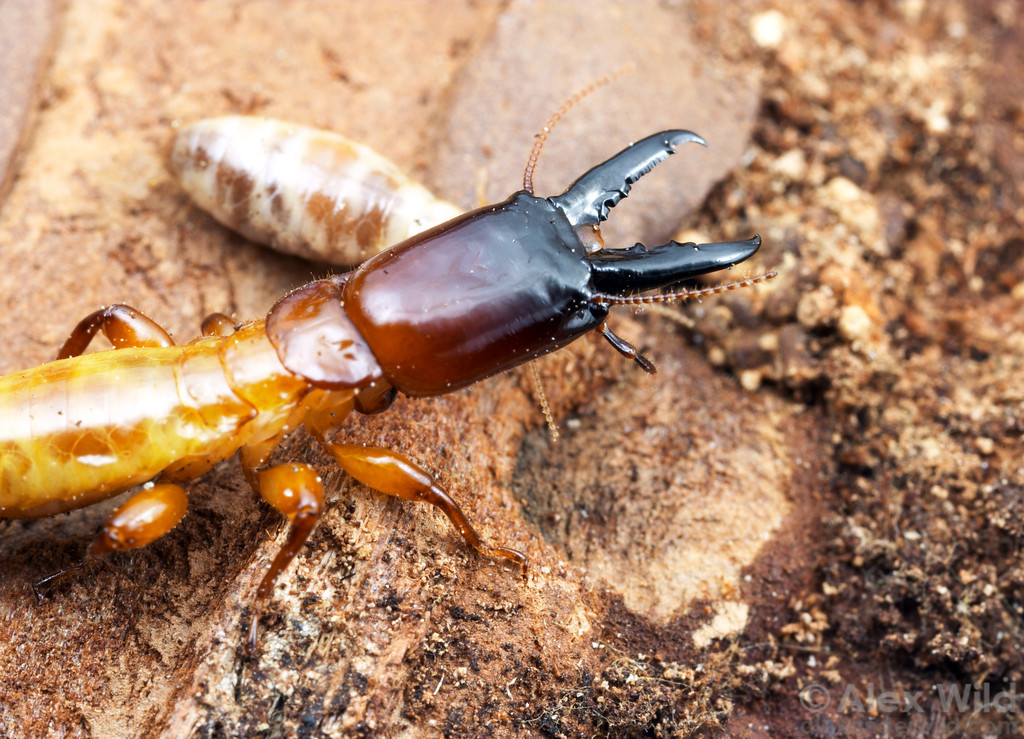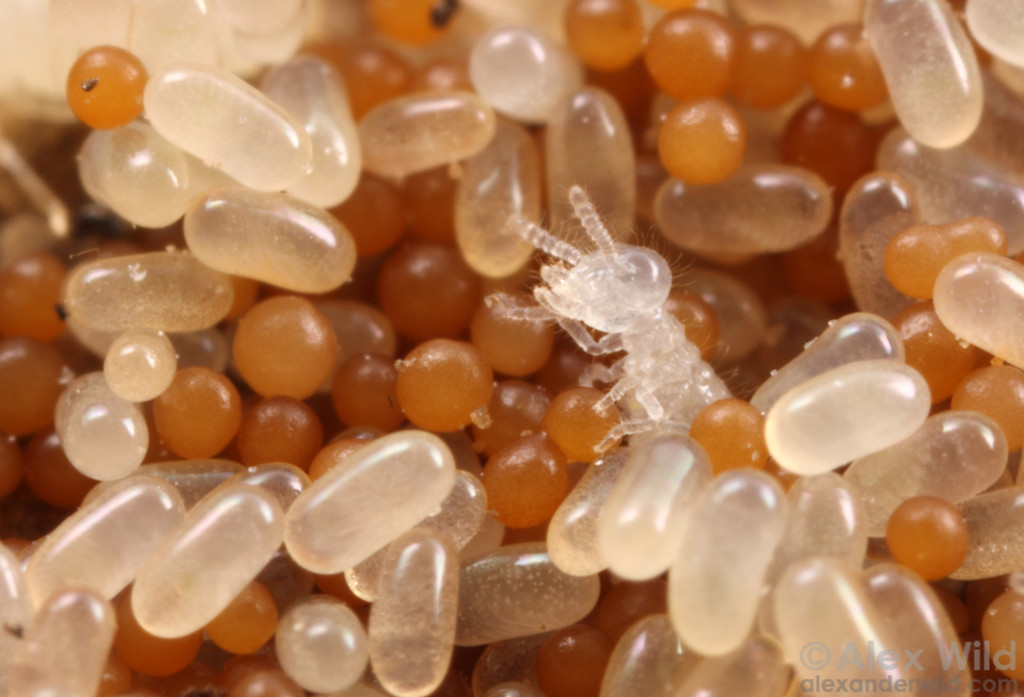
Adaptation
Form and Function
Cryptoteremes cavifrons belongs to the family insect being so,
it has three main body parts a head, abdomen, and thorax (Hopkins).
There are six legs present on cavifrons, the first pair are
faced forward, while the last two pairs face the anterior (Krishna
and Weesner 1969). The
legs of cavifrons are
smaller than non drywood termites causing them to move at a slow
rate (Brammer and Scheffrahn 2002). The movement of
cavifrons follows the gait
used by most insects, with three legs in a” ground” phase while the
other three in a “swing” phase, with three legs always on the ground
it gives cavifrons a
relatively stable means of locomotion (Ritzman 2013).
Being a dry wood termite
cavifrons lives in low moisture environments (down to 2.5% moisture
level) and has adapted special rectal glands that compresses fecal
matter, removing moisture and creating hard pellets that accumulate
inside and outside of burrows (Brammer and Schefffrahn 2002, Baker,
et al. 2001). The only members of the colony that have compound eyes
are the reproductives, the lesser two castes must rely on small
beaded antennae and tiny bristles located throughout the body for
sensory information (Krishna 1969). The morphology of termites
within a colony can vary between the three distinct castes starting
with reproductives, guards, and the immature termites or workers
(Kamble 1991).
The morphology of the reproductives otherwise known as king and queen or alates, varies greatly from workers and guards (Hopkins). The alates both first possess wings during “swarming” which is, the process of large numbers of alates leaving the colony via flying at once, until they find a suitable place to form a colony, and then the alates will lose their wings (Kamble 1991). The male alate will not change much after this, but the female’s abdomen will become stretched a half inch from laying thousands of eggs over a possible twenty-five year life span (Hopkins, Kamble 1991). Alates usually appear to be a darker brown distinguishing them from the other castes.
 Photo
courtsey of Alex Wild
Photo
courtsey of Alex Wild
The second caste the guards or soldiers have morphological characteristics that separate them from the others, such as a larger darker reddish colored head (Hopkins). The main distinction that can be made is the large set of mandibles present that serve to protect the colony against intruders, but render the soldier incapable of feeding itself and has to rely on workers for food (Hopkins). Soldiers are not capable of reproduction (Brammer and Scheffrahn 2002).Soldiers are formed when there high levels of certain hormones that trigger young larvae to begin this development (Bignell, et al. 2011). The soldiers use their large head to block the entrances of burrows from enemies in a phagromotic behavior (Baummer and Scheffrahn 2002).
Photo courtesy of Alex Wild.
 The final the caste the “workers” are actually
immature termites that make up the majority of the colony (Baker,
Et. Al. 2001). These immature termites are “pseudergates” or false
workers, the primary roles of the workers include caring for the
queen and young, expanding the nest, and harvesting food (Baker, et
al. 2001. Braummer and Scheffrahn 2002). The workers appear to be
small and pale creamish colored, with strong mandibles strengthened
with zinc to consume wood (Bignell, et al. 2011, Kamble 1991).
The mandibles crush their food together with the help of the
apical tooth to break down wood fibers to turn cellulose with the
help of a protozoan into useable glucose (Bignell, et al. 2011). The
workers like the guards are not capable of sexual reproduction
(Brammer and Scheffrahn 2002).
The immatures will over time resume development and will
either become soldiers or possibly grow into alates (Bignell, et al.
2011).
The final the caste the “workers” are actually
immature termites that make up the majority of the colony (Baker,
Et. Al. 2001). These immature termites are “pseudergates” or false
workers, the primary roles of the workers include caring for the
queen and young, expanding the nest, and harvesting food (Baker, et
al. 2001. Braummer and Scheffrahn 2002). The workers appear to be
small and pale creamish colored, with strong mandibles strengthened
with zinc to consume wood (Bignell, et al. 2011, Kamble 1991).
The mandibles crush their food together with the help of the
apical tooth to break down wood fibers to turn cellulose with the
help of a protozoan into useable glucose (Bignell, et al. 2011). The
workers like the guards are not capable of sexual reproduction
(Brammer and Scheffrahn 2002).
The immatures will over time resume development and will
either become soldiers or possibly grow into alates (Bignell, et al.
2011).